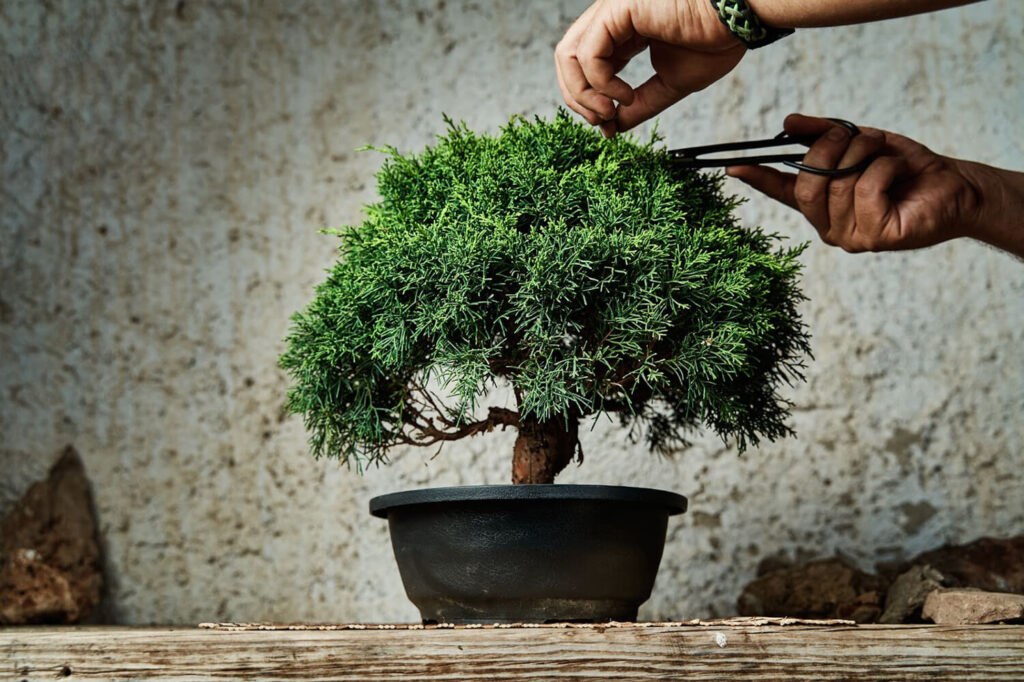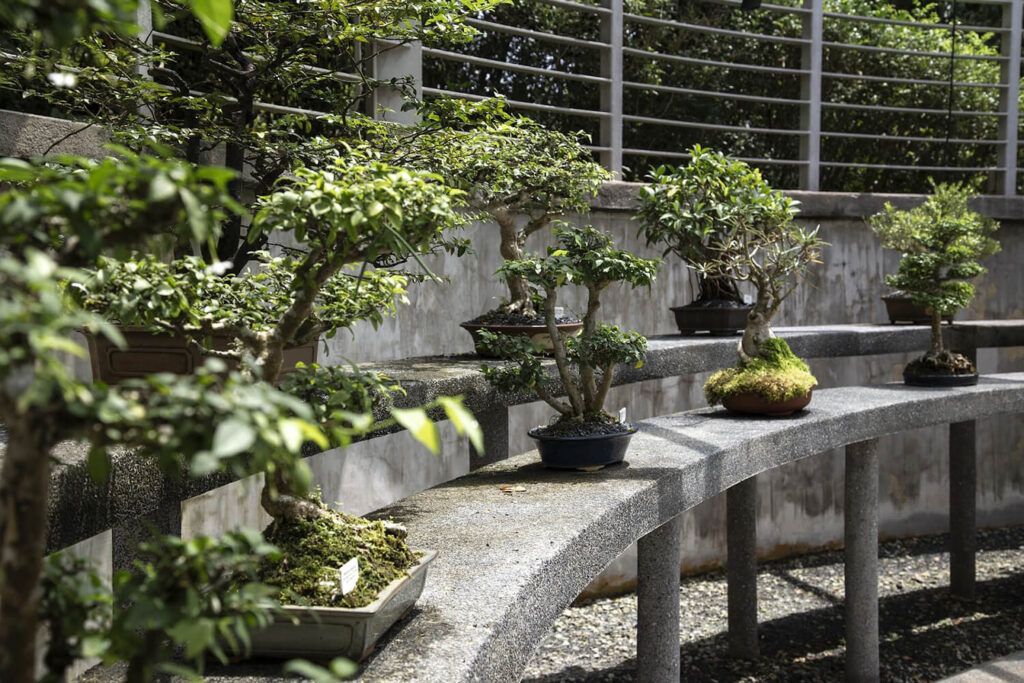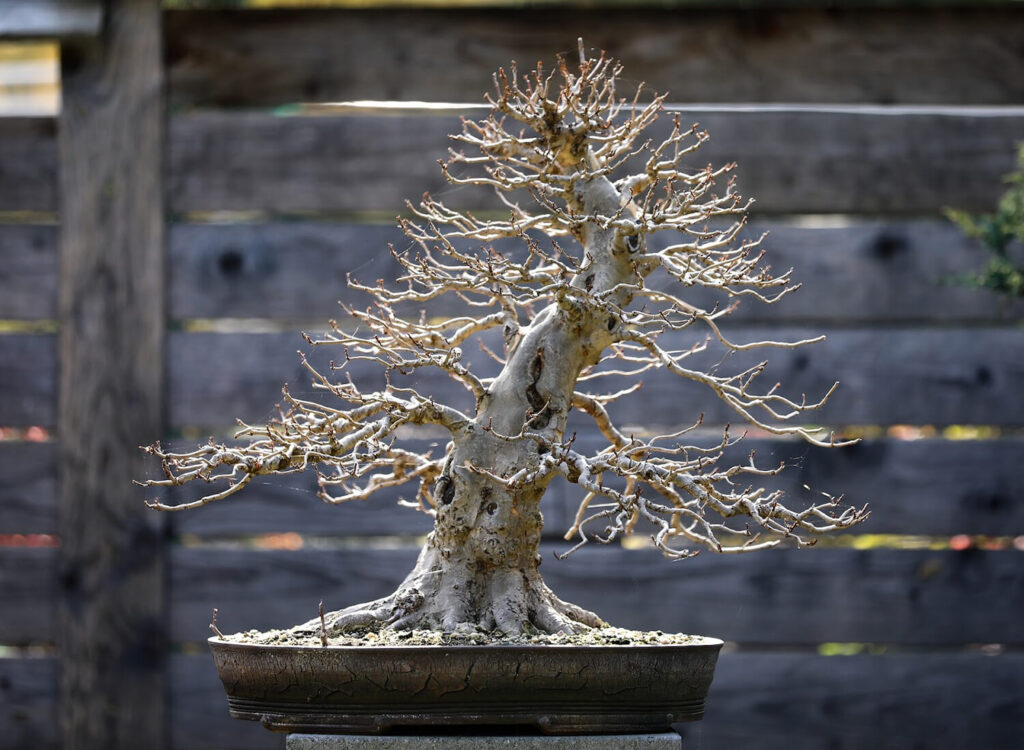“Why are bonsai trees so expensive?” you may ask.
Well, for once, growing a bonsai tree is high maintenance compared to other trees or house plants. You’d have to invest in a lot of things and equip yourself with the right horticultural skills.
More so, cultivating bonsai trees is regarded as an art form, increasing its monetary and cultural value.
If you’re looking into growing a bonsai tree…
Read on to know:
- 9 reasons why bonsai trees are so expensive.
- 4 important things to prepare before buying a bonsai tree.
- What to expect when growing a bonsai tree for the first time.
- And a lot more…
Why Are Bonsai Trees So Expensive to Grow? 9 Reasons
Understanding why growing bonsai trees can be costly is important, especially for beginner bonsai gardeners. That way, you can save money by preventing several failed attempts to cultivate a proper bonsai.
Check out these nine reasons why bonsai trees are expensive to grow:
Reason #1: Bonsai growing requires proper skills

While having basic horticultural knowledge and skills can be a good start, cultivating bonsai trees requires specific bonsai techniques for the tree to thrive.
To keep your bonsai tree small enough to fit in a shallow container, you’d have to know how to perform the following bonsai techniques on specific tree species:
- Root reduction
- Leaf and branch pruning
- Foliage trimming and defoliation
These techniques, coupled with the proper and consistent provision of the right nourishments and nutrients, add value to the bonsai tree.
While you can learn these bonsai techniques by reading books or watching video tutorials, it’d take beginner bonsai enthusiasts several years practicing their learned skills on various bonsai materials to master such methods.
Doing that requires you to invest money not only in buying books, joining online classes, and attending workshops but also in buying many bonsai plants to practice in your first few years.
Reason #2: Cultivating a bonsai is labor-extensive
To achieve your desired bonsai tree look, you’d have to check on it daily. You must do proper watering, fertilization, repotting, pruning, and wiring as needed and during the right season.
Since bonsai trees are potted in shallow pots, they tend to die more easily as they receive fewer nutrients than a regular tree in nature. This makes them more challenging to maintain, plus the fact that each tree reacts to actions differently.
In simple words, growing a bonsai tree is labor-extensive and time-consuming.
That said, before getting one, see if you have enough time to spare and whether it’s worth investing your valuable time.
Reason #3: Bonsai trees are grown for decades or centuries
Growing bonsai trees from scratch—particularly from seedlings or even a pre-bonsai young plant—requires patience as it takes a very long time. Some of the best bonsai trees in the market have been cultivated for decades, others for centuries.
Trivia: The most expensive bonsai tree known today—the Sargent Juniper bonsai at the Mansei-en Bonsai Garden in Japan—is about 1000 years old and costs 2M US dollars.
If you’re aiming to produce an expensive bonsai tree, you’d have to dedicate at least a decade to properly train it using various bonsai techniques. That’s because growing a thick trunk and styling a bonsai tree to look aged would take many years, depending on the tree species.
The more years you invest cultivating your bonsai trees, the more bonsai techniques you’d have to perform. Hence, the more money you should shell out.
Reason #4: High-quality bonsai trees are low in supply
Although cultivating bonsai trees is now being practiced in many countries, there’s still a comparably lower supply of bonsai trees in garden centers worldwide than regular house plants. That’s because bonsai specimens, especially older trees, take time and effort to grow.
You can most likely buy a well-established bonsai tree from fellow bonsai gardeners, bonsai nurseries, or bonsai conventions and exhibitions.
Suppose you happen to spot a bonsai tree in your local nursery. It’s probably priced higher than regular garden plants. This brings us to an important point: why are bonsai trees so expensive? The answer lies in the costs and efforts in cultivating one. All the meticulous care, time, and resources invested in growing a bonsai are considered when pricing these unique trees.
On average, you can get pre-bonsai materials from garden centers at more or less 50 US dollars. However, well-established pieces can cost a few thousand or million dollars.
Tip: Unless you’re collecting bonsai trees for a garden show, you can buy pre-bonsai materials or younger trees instead. Doing this helps you save costs and offer fuller control in styling your tree.
Reason #5: Shipping bonsai trees can be expensive

If there are no bonsai nurseries around your area, your best choice is to buy quality bonsai trees online from a different state or country. However, this option comes at a cost.
Transporting bonsai trees is more expensive because:
- Larger and heavier packages cost more shipping fees.
- It requires more package protection (e.g., a sturdier box).
- Shipping live plants undergo strict import restrictions, especially if coming abroad (that can also cost fees).
Depending on the state or country, shipping live plants can require more documentation, such as a phytosanitary certificate. A phytosanitary certificate is often required when transporting live plants from country to country and is issued by the exporting country.
Bonsai sellers process such certifications from their state or country. However, buyers often shoulder whatever fees that come with it. Some bonsai sellers may also add a service or miscellaneous fees for processing bonsai trees for international shipping.
Reason #6: Some bonsai tree species are rare and hard to maintain
The type of species is another thing that makes some bonsai trees so expensive. The rarer a species is, the more expensive it is to buy.
Junipers and ficus trees are two species that are popular among many bonsai enthusiasts. These species thrive in many areas and are easy to grow and maintain, so they’re mostly available in many countries. Sometimes you can even find them at regular plant nurseries.
However, due to low supply, rare species such as cedar can cost more. It’s more likely that you can get a cedar bonsai tree for sale from other bonsai owners than from bonsai nurseries.
Another thing that can drive the price of bonsai trees is how hard they are to grow and maintain.
High-maintenance bonsai trees such as hinoki cypress, acacia, and citrus require frequent maintenance that may be too much for beginners. A bonsai tree cluster that looks like a tiny forest is also equally harder to maintain.
Yamadori bonsai trees are also expensive due to being hard to collect and sensitive to changing environmental conditions.
Note: Yamadori bonsai trees are materials collected in the wild (e.g., forests, mountains).
Reason #7: Treating sick bonsai plants can be costly

Bonsai trees constantly live and grow every year despite being confined in a small, shallow container, leading to an important question: why are bonsai trees so expensive? Part of the answer lies in their susceptibility to sickness and the costs involved in their care.
Like regular trees, bonsai trees can easily be damaged due to improper care. That includes infrequent watering, too much sunlight, overfertilization, etc.
It’s also important to note that a younger bonsai tree is more prone to damage and sickness than an older tree, as the latter is more likely stronger and has an already established growth.
Once your bonsai tree got infested or infected by a certain disease…
Buy treatment solutions, such as insecticides and fungicides, to treat your bonsai tree. These can be pricey depending on the product brand and type of solution. Also, depending on the degree of the damage, you may have to treat your bonsai tree for several weeks or months.
Suppose your bonsai tree suffers from root-related illness; you must get a fresh bonsai soil mix and sometimes a pot to control the damage. Again, these things can cost some money.
Reason #8: High-quality bonsai pots are rare and expensive
To control the growth of the bonsai trees, they’re put in small, shallow bonsai pots with wire and drainage holes. High-quality ones are often handmade and made of sturdy materials, which explains why they’re expensive.
Antique Chinese pots for bonsai trees cost the most as they are rare and valued for their history. Some bonsai trees sold for a few million dollars are potted in such pots. You can buy antique Chinese pots from several bonsai shops and at bonsai conventions for more or less 500 US dollars.
The next most preferred pots for bonsai trees are the Tokoname pots from Japan, which are well-valued for their prime quality. Many known expensive trees are potted in Tokoname pots.
Compared to the former, Tokoname pots are more accessible and affordable. You can get them from most bonsai shops for more or less than 100 US dollars.
Watch this video to learn about Japanese Tokoname pots:
Reason #9: High-quality bonsai tools are necessary
Bonsai trees need more frequent care and maintenance than regular trees. To ensure that your tree receives the right care, you must have the necessary bonsai tools and supplies.
There are several bonsai techniques you’d need to practice—such as pruning, wiring, and repotting—to cultivate a bonsai tree. Each of these techniques requires the use of several specific tools.
For starters, you need to have these four most basic and necessary bonsai tools to start growing a bonsai:
- Bonsai shears – for trimming and pruning the foliage
- Bonsai wire cutter – for cutting wires when shaping the tree
- Wooden chopsticks – for loosening the soil during repotting
- Concave branch cutter – for cutting small branches and twigs
As you progress in growing your tree, you may also need to get more specialized tools like a rotary tool for creating jins and shari.
Depending on the quality of the product, bonsai tools can range from 30 to 600 US dollars per set.
Note: Many high-quality Japanese-brand tools are handmade, hence the price.
4 Important Things To Do Before Growing a Bonsai Tree

Now that you know the answers to the question, “why are bonsai trees so expensive?” let’s talk about what you can do to minimize your expenses as much as possible.
Bonsai art is a very demanding and expensive Japanese practice. One way to maximize your experience without going bankrupt is to equip yourself with the right knowledge beforehand.
To help you out, here are some things you can do to save costs when growing a bonsai tree:
1. Study the art form of bonsai
Before buying a tree to cultivate, learn about the art form of bonsai. That way, you’ll know exactly what to expect and prepare.
You can read books or watch tutorials and online courses to learn about the following:
- Different bonsai styles and sizes.
- Necessary bonsai tools and supplies
- Art form of bonsai and its brief history.
- Common tree species used for bonsai growing.
- Basic bonsai techniques (e.g., pruning, wiring, etc.)
Once you’re confident about your knowledge of bonsai trees, that’s only when you should buy a material to practice.
Doing this helps you save costs by decreasing the chances of buying several trees due to multiple failed attempts.
2. See if you can dedicate enough time and effort to it
As you should know by now, growing a bonsai tree takes a lot of time and effort, especially when it’s still developing.
Most bonsai tree species need to be watered daily, especially in the summer. Also, since they’re potted in shallow containers, regular fertilization and pruning are required to boost their health and balance their energy.
In short, bonsai growing isn’t for people who barely have time to take care of living plants.
If you still want to grow a bonsai, look for low-maintenance tree species such as ficus. However, you’d still need to provide basic care and maintenance to ficus bonsai for it to grow and thrive for years.
3. Know which trees are native to your area
Although you can choose whichever tree species you’d like to cultivate as a bonsai, selecting those native to your area is still the best and safest option.
Not only are they certainly available to nurseries near you, but native trees are more likely to adapt easily to an environment they are familiar with. That means less work for you.
If you want to cultivate native trees in your area, you can do any of the following:
- Look at your surroundings and specify the tree species growing in nature.
- Go to your nearest local garden center and ask which trees are native to your area.
4. Save up for some good-quality bonsai supplies
Lastly, save up some money to buy basic bonsai tools and supplies. You’d need these upon purchasing a pre-bonsai material.
You can buy bonsai tools and supplies at local bonsai nurseries or online shops, whichever is more convenient for you. Just remember to invest in some high-quality ones to ensure good performance and value for money.
Basically, here are what you should have once you start:
- Well-draining bonsai soil mix
- Different sizes of bonsai wires
- Watering can with rosette head
- Shallow bonsai pot with drainage holes
- Bonsai shears and concave branch cutter
- Well-balanced pellet and liquid bonsai fertilizer
Having these basic tools and supplies will help you kick off your bonsai growing journey.
Conclusion
Have you ever asked yourself, “why are bonsai trees so expensive?” or “are bonsai trees expensive to grow?”
Well, bonsai art is indeed an expensive activity, and many factors drive the price of cultivating bonsai trees.
For once, growing the tree itself is labor-extensive and time-consuming. It’s also grown for decades and is lower in supply than regular house plants. The tools and supplies used to control its growth and maintain its shape can also be pricey, depending on the quality.
These combined factors add value to the tree, hence the higher price. The older the tree, the more expensive it becomes.





0 Comments